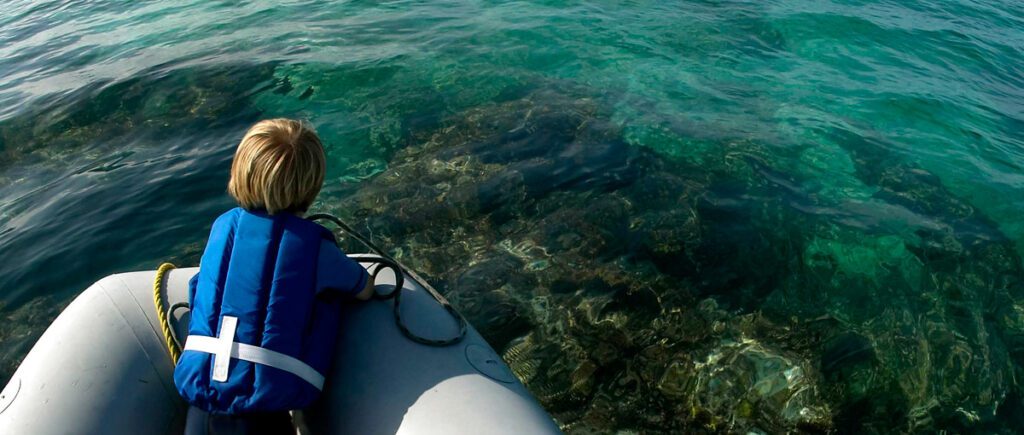Carbon Footprint
A carbon footprint is the total amount of greenhouse gases (including carbon dioxide) produced directly or indirectly by our activities and lifestyle. Learn how to calculate your boat’s carbon footprint, and ways to reduce and/or offset your impact.
Join Our Green Boating Community
What’s the Global Carbon Cycle?
Moderate levels of carbon dioxide (CO2) in our atmosphere are normal, as CO2 helps keep the planet warm and plays an integral role in many key biological processes, including photosynthesis. The earth naturally produces and processes CO2 in what is referred to as the Global Carbon Cycle. Human activities have altered this natural cycle by adding more CO2 to the atmosphere, and by affecting the ability of natural sources to remove it. The primary cause of increased CO2 concentrations in the atmosphere is due to the burning of fossil fuels (oil, coal and natural gas), as well as changes in land-use (deforestation).
The ocean plays a key role in keeping the carbon cycle in balance by absorbing excess CO2 from the atmosphere. When CO2 is absorbed by seawater, chemical reactions occur that increase the acidity of the water, a process known as ocean acidification. This increase in acidity will make it more difficult for corals to build or maintain skeletons, and for shellfish such as lobsters, scallops and clams to build shells.
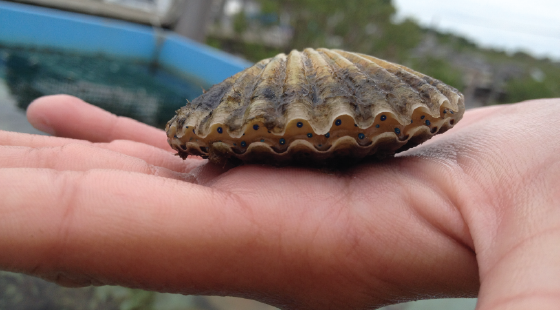
Oceans also face elevated temperatures and rising sea levels due to the warming of the atmosphere.
Without conscious effort, CO2 concentrations will continue to rise in the atmosphere and our ocean ecosystems will suffer. We can take personal action to decrease CO2 emissions to protect our ocean.
What’s a carbon footprint?
A carbon footprint is a measure of the impact our activities have on the environment. It calculates the greenhouse gases we have, or are expected to produce in our activities, and measures them in pounds or tons of CO2. Personal carbon footprint emissions can come from direct sources such as driving your car or indirect sources such as the fuel burned to produce a product you’ve purchased. We can effectively lower our personal carbon footprint by voluntarily improving the energy efficiency in our homes, on our boats, and by purchasing local products and changing our consumption patterns.
What’s your boat’s carbon footprint?
Your boat’s carbon footprint is the emission of CO2 primarily from burning the fuel in your engine(s) and generator.
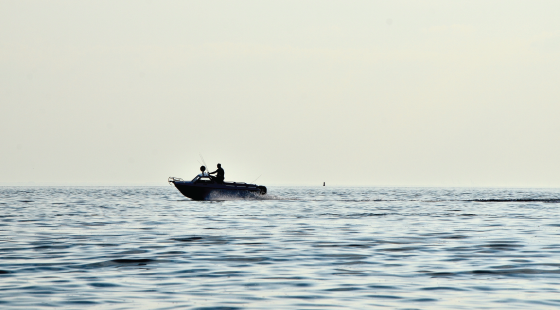
No two boats are the same and each will have a different footprint. The size and type of the engine(s), their age, the fuel type, your average cruising speed, the fuel efficiency and number of hours you use your boat all contribute.
As these factors are hard to quantify, the easiest route to estimating your boat’s footprint is by keeping track of your fuel usage.
How do you calculate your boat’s carbon footprint?
You can calculate your carbon footprint by determining the average number of gallons your engine(s) use per hour, then multiply this by the total number of hours you use your engine(s) during the season or year.
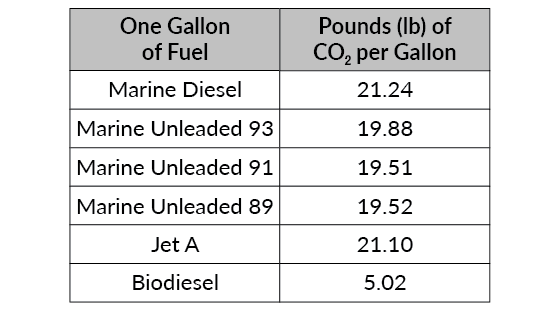
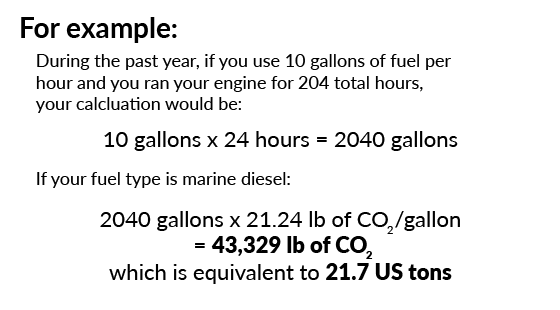
The key to lowering your boat’s carbon footprint is to decrease your fuel consumption. You will also save money – win win for the environment and your wallet! For tips on how, check out Reduce Fuel Usage and Renewable Energy.
How do you offset your carbon footprint:
Purchasing carbon offsets is one of the ways you can help address the imbalance that our daily lives have on our environment. A carbon offset is a reduction in emission of CO2 made in order to compensate for (or to offset) emissions made elsewhere.
The Ocean Foundation’s Seagrass Grow offers the first carbon offset program where you can compensate for your impact with “blue carbon” through the planting of seagrass meadows.
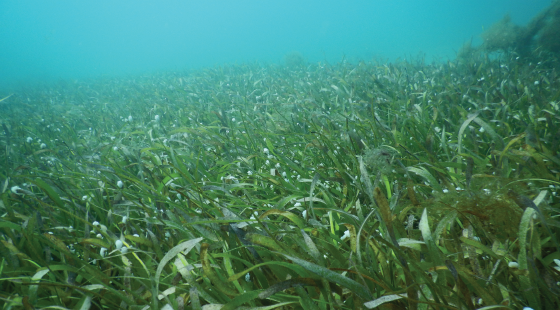
Impressively, seagrass habitats are up to 45 times more effective than the most pristine Amazonian rainforest in their ability to absorb excess CO2 from the atmosphere and a single acre of seagrass may support as many as 40,000 fish, and 50 million small invertebrates (Seagrass Grow). Better yet, Seagrass Grow focuses their replanting efforts on areas that have been damaged by boat propellers and anchors.
Did you know?
- Seagrasses only occupy 0.1% of the seafloor, yet are responsible for 11%of the organic carbon buried in the ocean.


